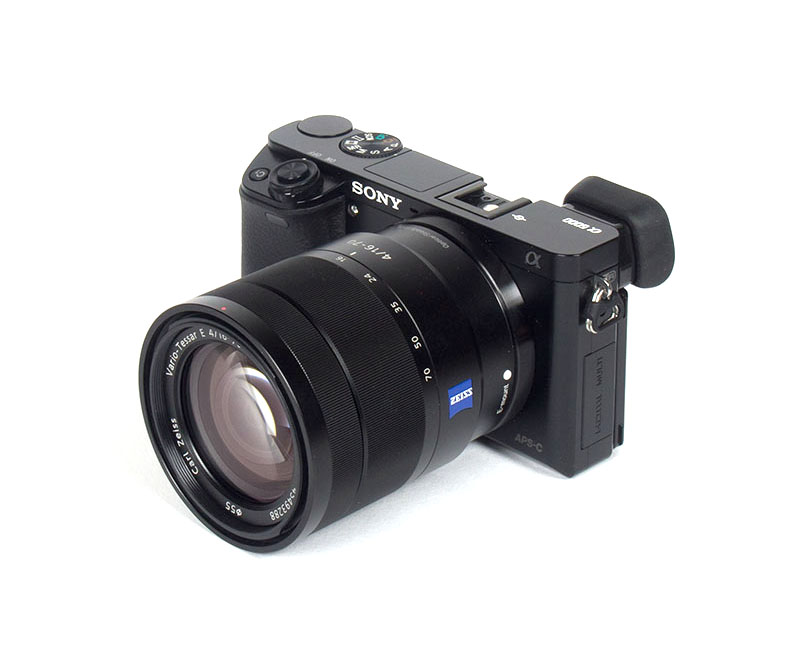
The Sony’s strategy regarding thei APS-C format E-mount system (formerly NEX) may appear to be a bit odd but it’s nonetheless successful. Sony released about as many APS-C format cameras as corresponding lenses. Cameras are more attractive to talk about so the corresponding media coverage translated into visibility and a very decent market share – also because the cameras are really nice actually. However, the lens lineup … well … compared to other systems it just doesn’t cut it honestly speaking. There are or at least were very few lenses targeting enthusiasts. With the rise of Sony’s full format E system, the situation has eased a bit lately. However, as far as dedicated APS-C format zoom lenses is concerned, there are basically just two zoom lenses that can be identified as high quality offerings: the Sony E 10-18mm f/4 OSS and Carl-Zeiss Vario-Tessar T* E 16-70mm f/4 ZA OSS (not counting non-mainstream adapter solutions). Admittedly we hesitated to review the latter for some time. Initially there were many reports about QC problems thus we actually avoided a review till late last year. This is in so far somewhat unfortunate since the lens specs are highly attractive with an equivalent full format zoom range of “24-105mm” – a perfect general purpose lens actually. At around 1000US$/800EUR, it is rather pricey though so it better be good …
The Vario-Tessar is surprisingly light-weight and compact and Sony managed to keep the build quality on a very high level. The outer lens barrel is made of metal based on a metal mount. When zooming towards the long end, the lens extends quite a bit. This inner lens tube is made of plastic. Both the zoom and focus ring operate smoothly. A petal-shaped lens hood (plastic) is supplied as part of the standard package.

We tested the lens on A6000 this time. The AF speed is generally good (less so on the NEX 7) although you still won’t take it for sports photography. AF operations are also essentially noiseless. Typical for E-mount lenses, manual focusing works “by-wire”. The implementation is really good and allows very fine-grained focusing. The lens also incorporates an optical image stabilizer (Optical-Steady-Shot or OSS). Sony claims a gain of up to 4 stops by the OSS but we wouldn’t sign this really. In real life that’s more like 2 to 3 stops.
| Specifications | |
|---|---|
| Equivalent full-format | “24-105mm f/6” |
| Optical construction | 16 elements in 12 groups inc. 1xAA, 2x aspherical and 1xED elements |
| Number of aperture blades | 7 (circular) |
| min. focus distance | 0.35m (1:4.3) |
| Dimensions | 66.6x75mm |
| Weight | 308g |
| Filter size | 55mm |
| Hood | supplied, petal-shaped, bayonet mount |
| Other features | Optical Image Stabilizer |
Distortion
As a user, you can select whether your images shall be auto-corrected or stick to the original quality of the lens. In auto-corrected mode, there is, unsurprisingly, nothing to worry about (at the expense of field-of view). However, the situation changes when looking at the original characteristic of the lens. It shows a rather heavy ~3.1% barrel distortion at 16mm and moderate pincushion distortion at and beyond 40mm. The two opposing forces even out around the 24mm mark. This is about typical in this lens class though.
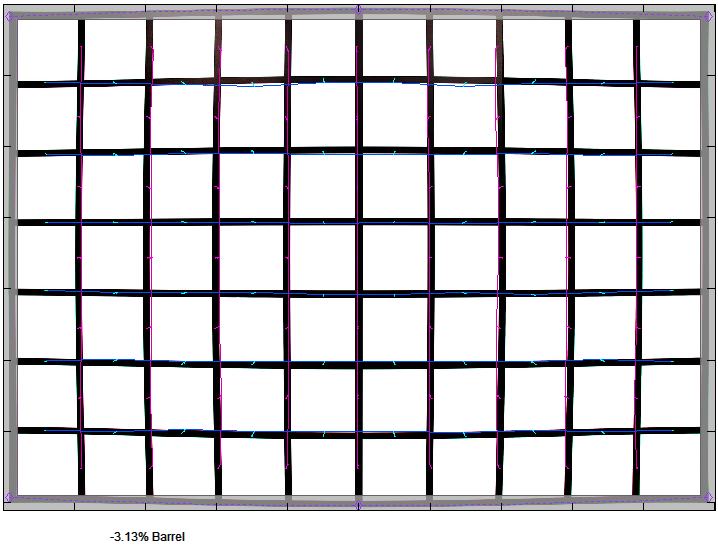
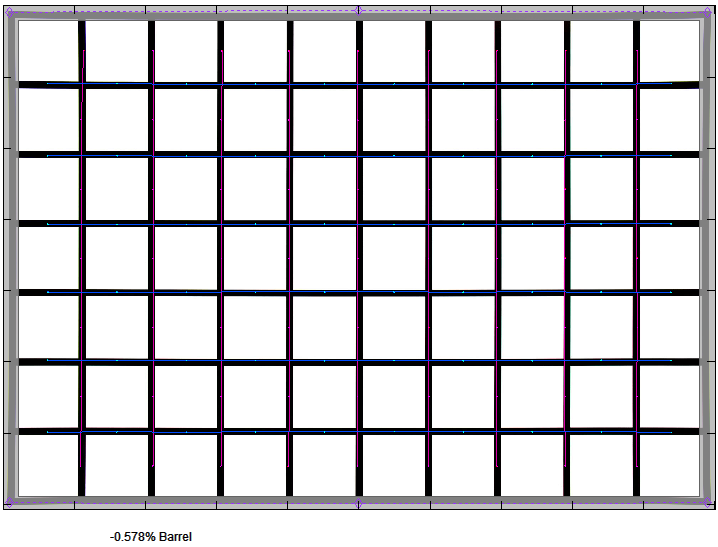
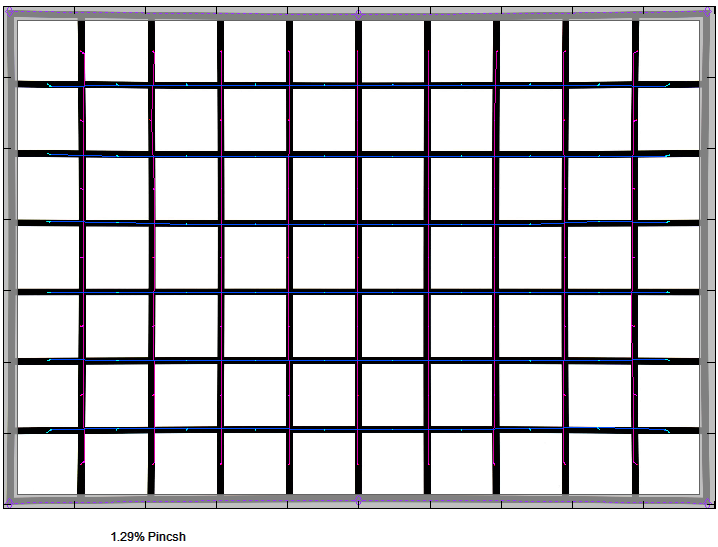
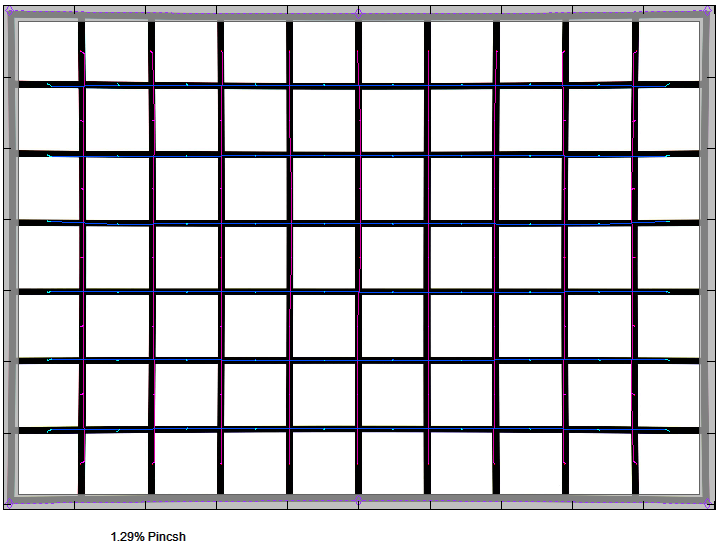
Vignetting
The uncorrected vignetting is rather extreme at 16mm at a fully open aperture – an indication that the lens is somewhat underdesigned actually. Stopping down reduces the issue but in critical scenes, the light falloff remains visible even at f/11. This also applies to 24mm @ f/4 but otherwise, it is not much of an issue anymore.

Of course, the situation changes again when using the lens with activated image auto-corrections where these flaws are (mostly) taken care of (at the expense of increased sensor noise in the corners).
MTF (resolution)
At the end of the day, we want a standard zoom lens to be sharp but we are sorry to say it – this is where the Zeiss lens fails. Or to be precise: it is actually great if not outstanding in the image center but the outer image field is often disappointing. The quality is mediocre at 16mm, not so hot at 24mm @ f/4 and 40mm @ f/4 but beyond believe at 70mm really. Stopping down helps to improve the borders/corners but the 70mm setting remains miserable. In our disbelief, we sent the lens to the local Sony service TWICE and they confirmed that it is within their factory specs. Since readers have been criticizing us for having used the Sony NEX 7 in the past, we also switched to the A6000 this time just to make sure that it is not the camera.
Note: This lens was purchased in a normal shop just like the average Joe would do. It was not provided by Sony/Zeiss.
Please note that the MTF results are not directly comparable across the different systems!
Below is a simplified summary of the formal findings. The chart shows line widths per picture height (LW/PH) which can be taken as a measure of sharpness. If you want to know more about the MTF50 figures you may check out the corresponding Imatest Explanations

Chromatic Aberrations (CAs)
Lateral CAs can be auto-corrected either by the camera or via various RAW converters. This is a lossless operation and it’s a good idea to take advantage of the Zeiss lens. The original CAs are high at 16mm. Beyond the issue eases and the CAs aren’t too bad considering the 24-megapixel scope.

Just to give you a visual for the CA situation at 16mm f/11:

Sample images
I suspect that some will probably come up with the statement that OpticalLimits is biased against Sony after this review. However, truth is that I took Sony gear to several private sessions in the past (besides I still own a Sony laptop and smartphone actually). This also applied to the A6000 / Carl-Zeiss Vario-Tessar T* E 16-70mm f/4 ZA OSS. Unfortunately I only verified the center performance of the lens at the time which is obviously great. Upon checking the results my disappointment was high though. Sony/Zeiss did many things right - range, build quality, image stabilization but optical quality is not part of the list. Yes, the center quality is outstanding but the corners are often mediocre or even dismal. The 70mm setting is especially terrible here. Lateral CAs are high in the lower range. In critical scenes you will also notice a heavy barrel distortion at 16mm and the high vignetting at 16mm @ f/4. At this stage it is worth to mention AGAIN that we also send the lens to the Sony service in order to let them verify that our sample was within specs - TWICE and we let them know who we are and that there'll be a review. So we have to take their word.
Typical for most Sony-made lenses the build quality is impressive. The tightly assembled metal body feels reassuring and mechanically it's simply a joy to use it out there. The AF speed is noiseless and fast without being a speed demon though (even on the A6000). The optical image stabilizer is certainly handy at times.
However, the high mechanical qualities doesn't overshadow the fact that this Zeiss lens is both heavily overpriced and below average by today's standards. As such we can only conclude ... not recommended.
-
Optical Quality
-
Build Quality
-
Price / Performance

